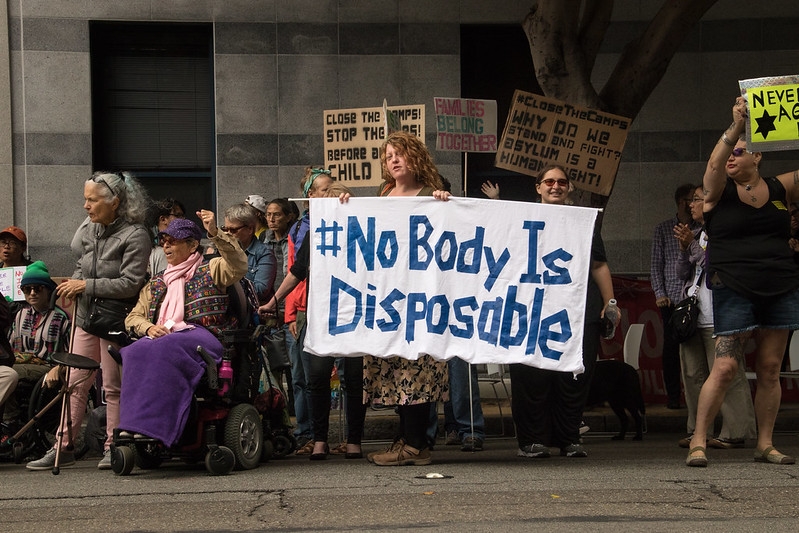We should celebrate that increased empowerment and equality are leading this trend of slowing growth and reducing pressure on the climate and environment.

Headlines about the urgency of the environmental crises we’re facing abound in the news. But there’s one issue the media consistently gets wrong: the impacts of human population growth.
It seems that every couple of months, another article comes out sounding the alarm about declining birth rates. And now that a COVID-19-related baby bust is predicted, the headlines are calling it a “crisis.”
The inability of people, particularly people of color, to access basic health care is a crisis. The climate emergency is a crisis. A million wildlife species going extinct in the coming decades is a crisis. People choosing to delay pregnancy or have fewer children is not.
While it’s true that more couples have put their pregnancy plans on hold during the pandemic, birth rates in the United States have gradually declined in the past 10 years as women prioritize their education and careers, delay marriage and have children later in life.
And although U.S. birth rates are slowing, we’re still far from providing the services everyone needs to manage their family planning decisions—and our population continues to grow. As it does, it takes a devastating toll on species and the environment. The effects can be seen on the climate, ecosystems and biodiversity.
Overshooting Earth
We should celebrate that increased empowerment and equality are leading this trend of slowing growth and reducing pressure on the climate and environment. The media often portrays lower fertility rates as an omen of economic and societal collapse, but that’s only true if we continue the exploitative path of infinite growth and weak social nets.
Even as our population growth slows, our outsized consumption patterns and reckless industrial growth in the Global North continue to destroy the planet. We should be more worried about what the climate crisis, pollution and biodiversity loss mean for our economy and society.
This rings particularly true in the United States, where our consumption is five times that of the average global citizen. One way to understand our rampant resource depletion is through the concept of ecological overshoot—the idea that we are using up the planet’s resources faster than they can be regenerated.
Global Footprint Network calculates Earth Overshoot Day every year. Pre-COVID, the global date was steadily moving up from early August to late July, meaning each year we use up the planet’s resources earlier and earlier as our population keeps growing and world leaders fail to take meaningful action to reduce greenhouse gas emissions, stop deforestation and protect nature.
The Global Footprint Network also crunches the numbers on what the overshoot date would be if everyone on Earth lived and consumed the way Americans do. Instead of falling into planetary debt sometime over the summer, humanity would use up all the resources the Earth can regenerate in a year by March 14. The remaining 292 days we would be in racking up ecological IOUs. That’s because affluence influences consumption and increases a country’s ecological impact beyond its own borders.
Although pandemic shutdowns slowed the economy enough to push the date back for a year or two, that’s a temporary reprieve that will be lost when things get back to normal, unless we change how we think about things like birth rates and capitalism. Ecological balance needs to be restored by design, not disaster.
With billions of people on the planet, humanity will continue to be a driving cause of dwindling resources and other associated environmental pressures, like increased pollution. Every person needs food, clean water and a space to call home. With only one Earth to share, we’re crowding out wildlife and worsening the climate and extinction crises. Case in point: 94 percent of species loss has occurred just in the past century, during which human population grew from 1.86 billion to 7.8 billion people.
Just and Equitable Solutions To Population Growth
Many environmentalists choose to ignore the reality of population pressure because of historic and present-day atrocities carried out in the name of population control. China’s one-child policy resulted in sex-selective abortions and infanticide. Here in the United States, forced sterilizations were inflicted on women in ICE detention facilities mere months ago. These injustices are not faraway problems of another time or endemic to other countries.

No one should advocate for coercive population control as a means to combat climate change. Every person should have the tools, information and ability to make the best reproductive choices for themselves, their partner and the planet.
Yet in America today, that’s not the reality for everyone.
Approximately 45 percent of all U.S. pregnancies are unintended, resulting in one of the highest unplanned pregnancy rates among high-income countries. Almost 20 million American women of reproductive age live in contraceptive deserts, lacking reasonable access to a health center that offers the full range of contraceptive methods.
If we don’t talk about population growth, or if we ignore it completely and sound the alarm over a “baby bust,” we miss a chance to push back against harmful rhetoric and promote just and equitable solutions to a growing population—like the education and empowerment of women. And access to voluntary family planning is a key part of supporting women with the resources they need so they can have the agency to make choices for their own bodies.
The greatest factor for a country’s fertility rate is contraceptive prevalence. But family planning and education also work together to improve outcomes for people and the planet. By focusing on the positive outcomes like sustainable fertility rates and empowering women, we can shift our perspective to embrace slowing population growth as a good thing and a way to create lasting change. The baby bust is not a signal of societal collapse but a positive indicator that we are getting closer to a sustainable, equitable world.
The decline in birth rates should be viewed as an opportunity to revolutionize how we provide health care, measure economic success, and ensure a higher quality of life for everyone.
Endless growth isn’t sustainable for our society or the planet. We need to reimagine systems that support thriving communities without being dependent on a growing population.
You may also like:





